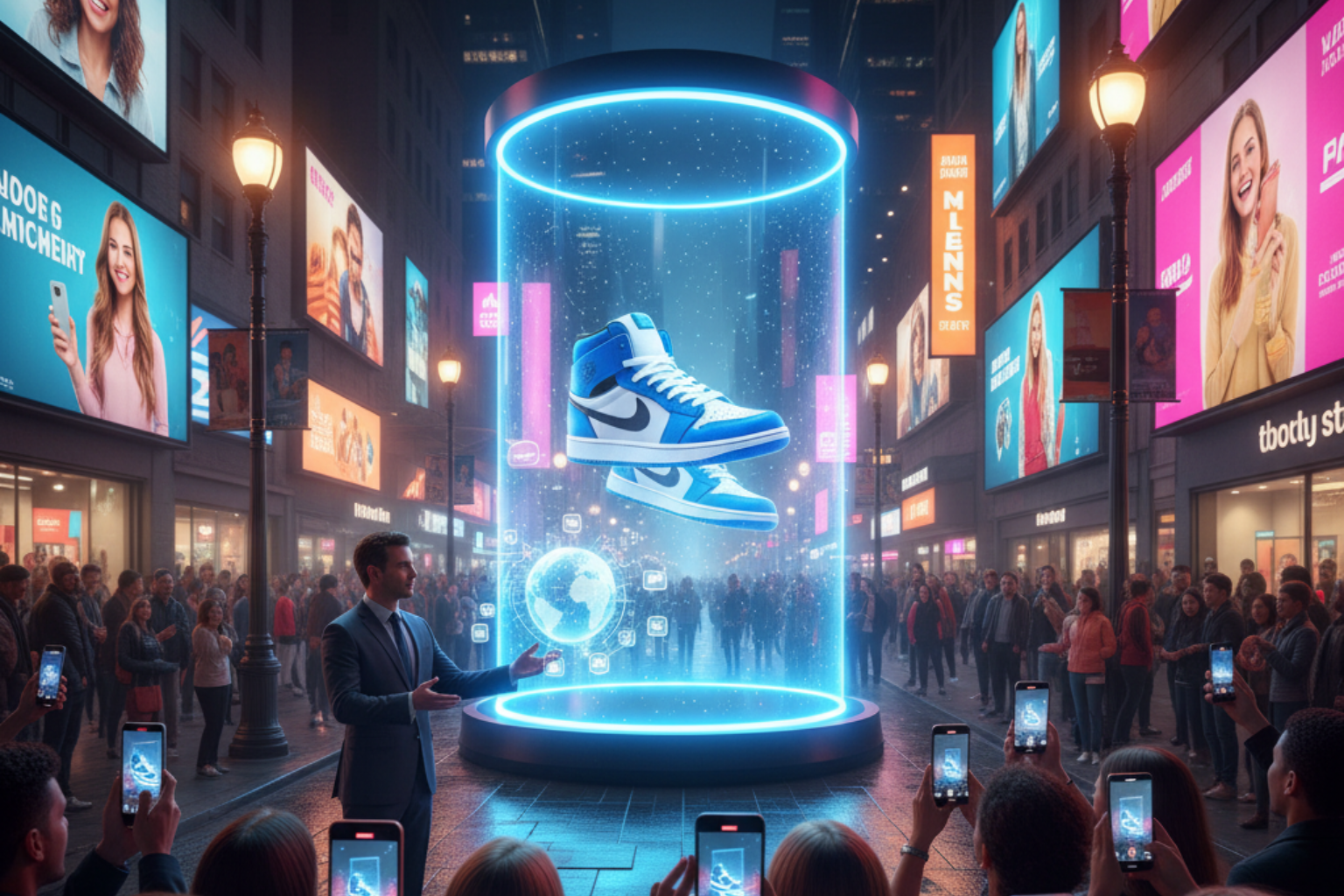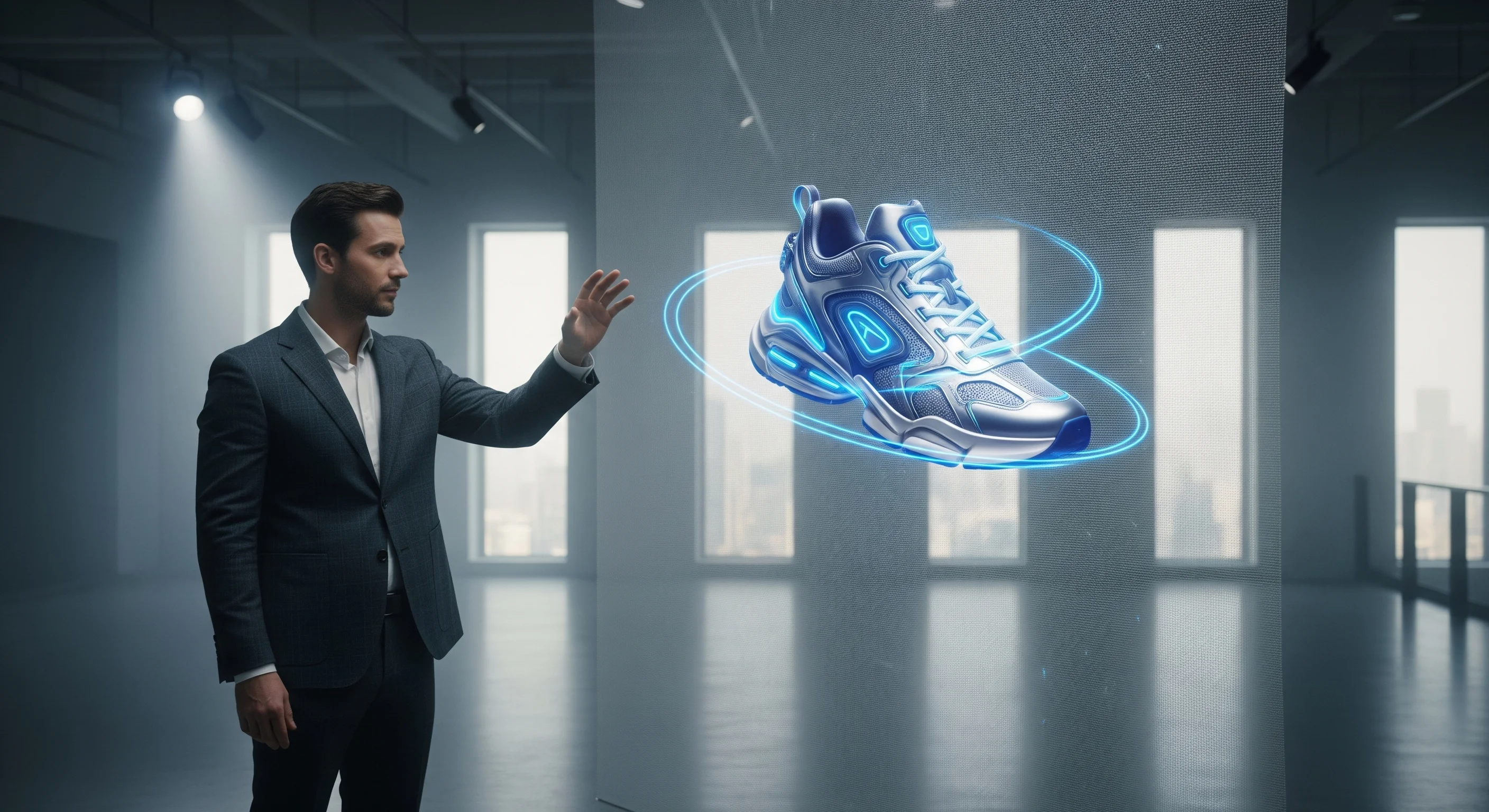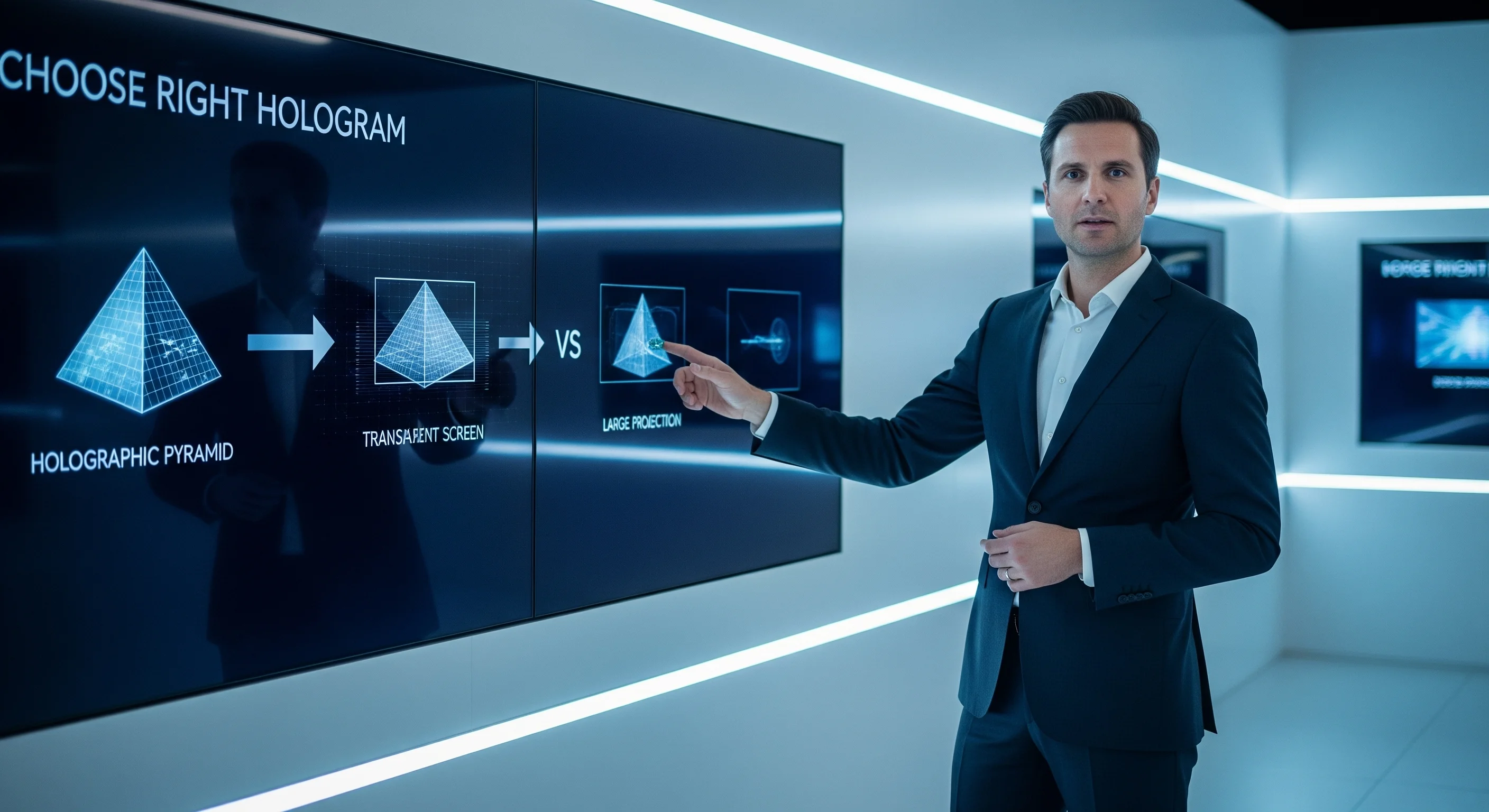The immersive marketing encompasses innovative strategies using technologies such as vr, the Augmented reality or holograms to design interactive and memorable experiences. Its objective is to capture the attention of consumers by immersing them in a universe where they become actors, thus reinforcing a emotional connection sustainable with the brand.

This approach is revolutionizing the interaction between brands and their customers by offering a strengthened commitment and an often higher return on investment thanks to personalized digital experiences. At a time when consumers are looking for more authentic and engaging moments, immersive marketing is turning advertising campaigns into real ones. Emotional moments and storytelling. By combining immersive technologies and customer data, brands can create meaningful relationships and optimize the impact of their marketing actions.
What is immersive marketing?
Definition and key principles
The immersive marketing is an innovative approach that makes use of technologies such as vr, the Augmented reality and holograms to design interactive and multisensory experiences. This method aims to immerse the consumer in the heart of a brand's universe, by stimulating their senses and emotions to strengthen its commitment. Based on captivating storytelling and strong interactivity, these experiences allow the customer to become an active player rather than just a spectator of marketing campaigns.
Challenges and goals for brands
For brands, immersive marketing is an essential strategy in order to stand out in a market saturated with information. This approach favors the creation of a lasting emotional connection with customers, which contributes to their loyalty and thus improves the return on investment (KING).
By integrating these innovative experiences into their campaigns, businesses can more effectively capture the attention of consumers, enrich thecustomer experience and collect valuable data on their behavior. This information is then used to refine their offers and meet the expectations of their audience even better.
The evolution of traditional marketing towards the immersive experience
Traditional marketing, often perceived as passive, is mainly based on the unidirectional delivery of advertising messages. On the other hand, immersive marketing turns this relationship into a real one interplay, where digital technology plays a central role. The emergence of vr, of the Augmented reality and holograms made it possible to propel the customer experience to a new level of immersion.
As a result, campaigns that were once limited to simple static videos or ads are being transformed into 360-degree interactive experiences. They immerse consumers in a rich, engaging and memorable virtual universe.
Why integrate holograms into an immersive marketing strategy?
Holograms: definition, functioning and typologies
Les holograms are three-dimensional images projected into space, creating the illusion of real objects or characters in motion. This technology uses advanced display techniques to offer visuals Realistic 3D and interactive, able to instantly capture the attention of viewers. There are several types, such as video projection holograms, pyramidal holograms, and laser devices. Each of these options offers unique sensory experiences, adapted to a variety of business contexts.
The emotional and sensory impact on the consumer
Integrating holograms into an immersive marketing campaign significantly reinforces the emotional impact by offering a unique sensory experience. Their living, three-dimensional appearance evokes immediate wonder, stimulates curiosity, and promotes deep engagement. These personalized interactions allow for better brand memory and create a lasting emotional connection. Thus, the marketing message becomes more powerful, and the customer relationship gains in authenticity and proximity.
Concrete use cases in events, retail and trade shows
In events, holograms make it possible to design spectacular animations and interactive presentations that leave a lasting impression. In retail, they offer the possibility of virtually trying on products, such as clothing or makeup, significantly improving the customer experience in stores. Finally, during trade shows, interactive holographic demonstrations allow visitors to explore products from all angles, thus increasing the attractiveness and effectiveness of exhibition stands.
Testimonies and feedback from pioneer brands
Many forward-thinking brands share positive stories about the use of holograms in their digital marketing strategies. They report a significant increase in engagement and better recognition of their image thanks to immersive and innovative campaigns. This feedback encourages the adoption of this technology in Brand Innovation Labs, where the aim is to push the boundaries of customer experiences and explore new frontiers in immersive marketing.
How do you create a successful immersive experience with holograms?
Steps to design an immersive holographic campaign
To design an immersive campaign efficient with holograms, it's important to start with clearly define your goals and the target audience. This first step guides the message and the type of experience to offer. Then, develop visual content adapted to holography, focusing on high quality animations with marked contrasts to ensure a striking result.
Choosing the optimal mount and location is also critical to maximizing the visibility and the impact of your hologram, whether it's a holographic wall, a specific projector, or integrated interactive elements.
Examples of engaging scenarios
You can imagine various scenarios for your holographic experiences: the dynamic presentation of a 3D product that revolves around the viewer, a virtual hostess that interacts in real time with visitors, or even fun animations integrated into an event stand to attract and retain attention. These scenarios should focus oninteractivity and immersion to stimulate curiosity and foster an emotional connection with your audience.
Necessary technologies (projectors, supports, interaction, etc.)
The success of an immersive experience is based on adapted technological integration. You will need a high quality holographic projector that can broadcast 3D images with sufficient brightness and good contrast. The supports can vary between holographic walls, holographic pyramids or rotating LED platforms depending on the context.
To maximize engagement, integrate interactive devices like motion sensors, gesture controllers, or touch interfaces that allow the consumer to manipulate and to virtually explore the content displayed.
Best practices for maximizing engagement
For the experience to be as impactful as possible, it is recommended that you work on Storytelling around the hologram in order to create an immersive and coherent narration. Also, be sure to control the surrounding lighting to avoid reflections and ensure optimal visibility.
It is also important to provide human or digital support to guide the user throughout the experience, by stimulating their active participation and by collecting relevant customer data. Finally, early promotion and strategic distribution via digital and event channels increase the visibility and success of your campaign.
The benefits of immersive marketing based on holograms
Brand differentiation
Use holograms in your immersive marketing strategy allows you to differentiate your brand in a dense competitive landscape. This innovative technology offers a unique visibility by creating three-dimensional visual experiences that instantly capture attention.
Holograms produce a surprise effect that positions your brand as Pioneer and Innovative, thus strengthening its image and its attractiveness among consumers.
Improvement of memory and reputation
Holographic content promotes better memorization marketing messages thanks to their immersive and interactive power. Studies show that campaigns that incorporate holograms increase the retention of consumer information by up to 40%.
This original exhibition and multisensory also facilitates digital word-of-mouth, amplifying the brand awareness far beyond the exhibition space.
Boosting sales and customer loyalty
By making shopping experiences more engaging and personalized, holograms contribute to boost sales and to encourage loyalty. In particular, the interactive nature makes it possible to present products from several angles or in a scripted manner, which increases customer interest and trust. Some campaigns report an increase in the conversion rate up to 25%.
In addition, by offering a customer experience Innovative, brands strengthen their connection with consumers and promote a sustainable commitment.
Comparison: holograms vs other immersive technologies
Augmented reality
La Augmented reality (AR) superimpose virtual elements on the real environment through screens, such as smartphones or specialized headsets. This technology enhances the perception of the physical world while offering interactive experiences.
However, its use often requires a Personal device to view the content. In addition, it offers a more limited immersion in terms of depth and presence compared to holograms projected directly into space.
Virtual reality
La virtual reality (VR) immerses the user completely in a closed digital environment, usually via a dedicated headset. This total immersion allows for highly controlled and engaging experiences.
However, it can be perceived as isolating, as it cuts the user off from the real world. In addition, the need to use specific equipment can hinder spontaneous adoption, especially during events or at points of sale, unlike the ease of access holograms.
Video mapping/3D projection
The video mapping And the 3D projection consist in projecting animated images onto physical surfaces, transforming objects or spaces into dynamic visual supports. These technologies are very impressive for creating large visual installations.
However, they often require dedicated spaces and offer less direct interactivity with users. On the other hand, holograms stand out for their “floating” and three-dimensional presence, visible from several angles.
Why holograms offer better ROI in certain contexts
Les holograms stand out for their ability to capture attention without requiring individual material, which allows immediate dissemination and a strong emotional impact. Their three-dimensional nature, visible at 360 degrees, favors spontaneous interaction and increased memory of the message.
In contexts such as events, points of sale or trade shows, holograms allow for more natural customer engagement and a fluid experience, without technological barriers. This can significantly improve the return on investment (ROI) compared to other immersive technologies.
Upcoming trends in immersive marketing with holograms
Artificial intelligence applied to holograms
Artificial intelligence (AI) is establishing itself as a key player in the evolution of holograms, in particular by allowing real-time personalization interactions. Thanks to in-depth analysis of customer data and machine learning, these holograms will be able to adapt to individual behaviors and preferences, offering a more immersive experience targeted and engaging.
The combination of AI and immersive technologies is paving the way for campaigns of digital marketing ever more interactive and effective.
Interactive and personalized holograms
The future of immersive marketing is based on holograms that can interact with consumers in a sophisticated way. These experiences, where the user can modify, manipulate, or dialogue with the intended content, increase engagement and extend attention spans. In addition, the personalizing holographic messages, made possible through the integration of customer data, creates a feeling of exclusivity and promotes loyalty.
The rise of expanded retail spaces
Physical retail spaces are evolving thanks to the integration of holograms, turning into real ones augmented environments. These places allow customers to live unique immersive experiences, combining real products and three-dimensional virtual content. This trend is part of the rise of strategies omnichannels, where immersive marketing effectively complements the traditional offer, thus optimizing the customer experience and the KING campaigns.
Conclusion: Holograms, a key driver of tomorrow's immersive marketing
Les holograms represent a major advance in the field of immersive marketing, offering brands a powerful lever to design experiences that are both memorable and engaging. By combining technological innovation, interactivity and emotional impact, they are redefining how consumers perceive and interact with products and campaigns.
With the rapid rise of immersive technologies, holograms are becoming an essential tool for capturing attention in an increasingly saturated digital environment. They also allow for unprecedented personalization and interaction. Their integration into marketing strategies contributes to optimizing the return on investment, by boosting the customer experience, strengthening reputation and stimulating consumer loyalty.
At the dawn of a new marketing era, holograms offer brands a unique opportunity to stand out and innovate. By creating deep emotional connections with their audiences, they become a central pillar of immersive marketing. They thus pave the way for ever more campaigns. Creatives, interactive and impacting.
Immersive Marketing FAQ
What is immersive marketing?
The immersive marketing is an innovative strategy that makes use of advanced technologies such as vr, the Augmented reality or even holograms. These tools allow consumers to immerse themselves in a unique sensory and interactive experience. The main objective is to create a strong emotional connection and sustainable between the brand and its customers, thus going beyond traditional marketing approaches.
What is marketing immersion?
Marketing immersion refers to the state in which a consumer is completely engrossed in a brand experience. This is made possible by a combination of elements visuals, Sonorous and interactive. This approach aims to captivate the senses, maintain attention and thus promote a stronger impact and a increased memorization of the message conveyed.
What are the 4 types of marketing and where is the immersive one?
The four main types of marketing include:
- Product marketing
- Relationship marketing
- Digital marketing
- Experiential marketing
Immersive marketing is mainly part of the experiential marketing, because it seeks to design experiences that are engaging and memorable. It also includes digital technologies to enhance interactivity and emotional impact.
What does “immersive” mean in a marketing context?
In a marketing context, the term “immersive” refers to the ability of a campaign or experience to immerse consumers in a captivating world where they feel genuinely involved. This immersion is often made possible through the use of modern technologies, making it possible to promote a deep commitment And a emotional relationship strong with the brand.
What is immersive content?
One immersive content is a type of enriched digital content that appeals to several consumer senses. It often combines 3D images, 360-degree videos, as well as technologies from Augmented reality or virtual. The aim is to create an interactive and engaging experience that goes beyond simple passive observation.
How do you integrate immersive marketing into a campaign?
To integrate the immersive marketing, it is essential to combine Storytelling, immersive technologies (such as holograms, virtual or augmented reality) and interactivity. This requires a careful design, taking into account the customer journey, the scripting of content and the choice of appropriate media. The aim is to maximize the impact and engagement of the public.
Why use a hologram for an immersive experience?
Les holograms stand out for their ability to offer a visible three-dimensional representation without worn equipment. This accessibility, combined with a spectacular rendering, captures the attention of viewers. They allow for a fluid and natural interaction, reinforcing thesensory experience and emotional consumers.
How much does an immersive hologram marketing campaign cost?
The cost of an immersive hologram campaign depends on several factors: the complexity of the project, the quality of the content, the technologies used and the duration of the campaign. In general, a initial investment therefore is required for production and equipment. However, this cost can be justified by a increased engagement and a better return on investment.
What is the difference between a hologram and an augmented reality?
One hologram is a three-dimensional image projected into real space, visible directly without a screen or special device. On the other hand, the Augmented reality superimposes virtual elements onto the real environment, usually visualized via a smartphone, tablet, or headset. The hologram thus offers a more pleasant experience reachable and spontaneous in physical presence.
Conclusion
The immersive marketing, and more particularly the use of holograms, is profoundly transforming the way brands Captivate and Engaging their customers. By offering experiences that are interactive, emotional and memorable at the same time, these technologies allow businesses to differentiate effectively while stimulating the Sales And the loyalty.
With their strong visual impact and their increasing accessibility, holograms are a marketing lever promising offering a significant return on investment. For innovating and create a lasting link with your consumers, it is time to integrate these immersive solutions into your digital strategy today.




